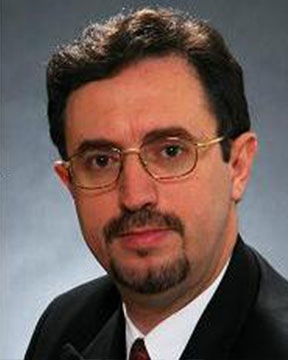SYMPOSIUM and
ROUND TABLE TOPICS
Physical chemistry is the study of macroscopic and microscopic phenomena in chemical systems in terms of the principles, practices, and concepts of physics such as motion, energy, force, time, thermodynamics, quantum chemistry, statistical mechanics, analytical dynamics and chemical equilibria. Physical chemistry, in contrast to chemical physics, is predominantly (but not always)
a supra-molecular science, as the majority of the principles on which it was founded relate to the bulk rather than the molecular or atomic structure alone (for example, chemical equilibrium and colloids).
Physical chemistry is crucial for understanding the systems and designing them for practical applications, with the use of modern x-ray crystallography and analysis of non-bonded interactions in non-stoichiometric chemical compounds. Some advanced physicochemical procedures: thermochemistry with thermokinetics, clathrate chromatography, thermogravimetric techniques add to the value.
Physical chemistry or named differently supramolecular chemistry became an extremely large area bringing to the society enormous knowledge and possible practical applications of the systems, from clathrates through macrocyclic receptors to organic zeolites, Metal Organic Frameworks (MOFs), Covalent Organic Frameworks (COFs) and nano assemblies.
The practical applications include:
- Separation of mixtures which are otherwise difficult to separate using conventional methods. Preparation of high purity organic compounds (isomers).
- Methods of preparation of chromatographic systems designed and optimized for given analytical problems, in particular for enantiomeric separations.
- Separations of gas mixtures with the use of porous materials
The symposium will cover, but is not limited to, the following topics:
1.
Supramolecular chemistry, from clathrates through macrocyclic receptors to organic zeolites, Metal Organic Frameworks (MOFs), Covalent Organic Frameworks (COFs), nano assemblies etc., including:
- Analytical applications: clathrate chromatography, solvent (mixed) generated selectivity, isotopomer separations, analyses of commercial products.
- Structural investigations based on combination of x-ray diffraction and spectroscopies, special experimental techniques to study crystal structures of chemically labile preparations, include chromatographic sorbents at equilibrium with mobile phases.
- Advanced calorimetry of inclusion compounds formation, including chermokinetic course of complexation processes, molecular mechanism of guest-component diffusion through the host lattices.
- Analyses of the non-bonded interactions with the use of experimental and computational methods.
- Wide scope investigations of inclusion capabilities of coordination compounds, putting to order literature data on their solvation/coordination characteristics.
- Complete physicochemical characteristics of organic zeolites formed by coordination complexes and mixed solvent systems. Description of the phenomenon called 'generation of sorption sites by molecular inclusion';
- The use of inclusion compounds in catalysis.
- Extensive studies on water as clathratogenic host compound, their importance in science, living systems and in the environment - including geological hazards.
- Structural studies of photo-tautomeric systems - works on the, so-called, pretransition structures and the respective host-guest systems.
- Pharmaceutical applications of designed coordination complexes - special attention to anticancer activities and the minimum side effects
- Polymorphism of crystalline organics and metalloorganics;
- hydrophobic hydration, supramolecular solvation.
- crystallography of molecular complexes.
- stereochemistry of calixarenes, resorcinoarenes, heterocalixarenes and their complexes
- Crystal engineering of aluminum and gallium coordination complexes;
- Structure and complexation properties of polycyanopolycadmate, cucurbiturils and their derivatives with rare metalse;
- Bi- and multinuclear coordination complexes, heteronuclear complexes, magnetic properties;
- Supramolecular archaeology;
- Coordination polymers of different topologies;
- Biological activity of coordination complexes
Since Catalysis and Electrochemistry have also traditionally constituted, together with Thermodynamics, major areas of Physical Chemistry and have contributed very significantly to technological development and to human welfare. In recent years their role is becoming increasingly important for sustainable production of Energy and Chemicals. At the same time it is becoming increasingly apparent that the two are closely related and that the principles and concepts of Thermodynamics and Catalysis are not limited to chemical systems but are also very important in biology and in subatomic physical processes, such as the formation of hadrons, e.g. protons and neutrons, from their constituents, e.g. quarks, in subatomic subfemtometer distances.
Consequently this symposium will also cover the following topics:
2.
Heterogeneous Catalysis: Structural, physicochemical and functional aspects of surface science and heterogeneous catalysis, including the role of promoters and transport processes, such as diffusion and spillover.
3.
Electrochemistry: Structural, compositional, physicochemical and functional aspects of electrocatalysis at the anodes and cathodes of batteries, fuel cells and electrolyzers.
4.
Electrochemical Promotion of Catalysis (EPOC): Fundamental and applied investigations of the phenomenon of EPOC or non-Faradaic Electochemical Modification of Catalytic Activity (NEMCA effect) with emphasis in the electrochemical promotion of nanodispersed catalysts and in the development of practical monolithic reactor designs for its utilization in automotive exhaust treatment and in the chemical industry.
5.
Concrete carbonation: Experimental investigations and mathematical modeling of the kinetic and transport processes responsible for the carbonation and chlorination of reinforced concrete and limiting the useful lifetime of reinforced concrete structures.
6.
Synthesis of chemicals and of composite particles: Modeling of the thermodynamic and kinetic similarities between the catalytic synthesis of chemicals and the synthesis of composite particles, e.g. hadrons such as protons and neutrons, from their lepton constituents in the highly exothermic process known as hadronization, together with evaluation of the practical possibilities for the controlled and sustained utilization of the huge energy released in hadronization, which is of the order of 1 GeV per proton or neutron produced.
7.
Gravitational confinement of relativistic particles in microscopic black holes: Modeling of the effect of particle velocity on gravitational mass and on the kinetics of hadronization via gravitational confinement of ultrarelativistic leptons, such as neutrinos, in circular orbits according to the rotating lepton model. Investigations of the role of gravity, special and/or general relativity, and of the Heisenberg uncertainly principle in the creation of miniscule black holes with the properties of protons and neutrons.
8.
Crystallography of nanocrystalline materials






